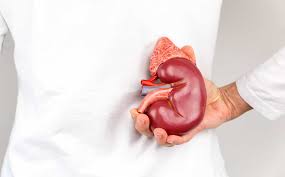Article
Immunotherapy Is 'Here to Stay' in Kidney Cancer
Author(s):
Checkpoint inhibitors are moving into the treatment realm of renal cell carcinoma; however, questions still remain.
Patients with renal cell carcinoma have more treatment options than ever before, though many questions still remain unanswered, according to Toni Choueiri, M.D.
“The field is continuing to evolve, and checkpoint inhibitors are here to stay in renal cell carcinoma,” Choueiri said.
Choueiri, who is the director of the Lank Center for Genitourinary Oncology and the Kidney Cancer Center at Dana-Farber Cancer Institute, sat down with OncLive, a sister publication of CURE, to discuss immunotherapy and other exciting advances in the kidney cancer space.
Immunotherapy is resurfacing in the realm of kidney cancer, this time in the form of checkpoint inhibitors, Choueiri said. Agents such as Opdivo (nivolumab), Yervoy (ipilimumab), Keytruda (pembrolizumab) and Inlyta (axitinib) have shown exciting results, besting the current standard of care, Sutent (sunitinib).
“Initially, nivolumab was approved in patients who progressed after VEGF targeted therapy as a single agent, based on an overall survival benefit in CheckMate-025, and now we have a frontline combination therapy with nivolumab and ipilimumab, which is a CTLA4 blocker, that showed an overall survival benefit versus sunitinib, the standard for more than 10 years,” Choueiri explained.
Additionally, in CheckMate-214, frontline Opdivo plus Yervoy was compared to Sutent in intermediate- and poor-risk patients with advanced renal cell carcinoma, and showed that the immunotherapy combination reduced the risk of death by 32 percent compared to Sutent, leading to the FDA approval of the drug duo in April 2018.
However, information is still limited that could help physicians clearly identify which therapies this patient population should receive.
“We don’t yet have biomarkers that are clear to choose a therapy versus another,” Choueiri said. “We may end up with over five (therapies) — or combinations – in the frontline setting, all compared against sunitinib. We don’t know how to sequence these therapies and how to compare them to each other.”
Potential side effects could help to guide decisions on which therapy to use. For example, diarrhea is common in patients who are on VEGF inhibitors or tyrosine kinase inhibitors (TKIs). Diarrhea also occurs in patients who are taking checkpoint inhibitors, though the treatment for the side effect differs: Patients on VEGF-TKIs can have their therapy withheld until the side effect subsides, while those on checkpoint inhibitors are more likely to be prescribed steroids.
“So, as we proceed with these combinations, we have to be pretty careful about how to use them and what can cause what,” Choueiri said. “Things are pretty unclear at this time. (In) my practice if it’s not a severe diarrhea, I end up stopping the TKI because the half-life tends to be shorter than the checkpoint blocker, and see how the diarrhea changes in the patient.”
In addition to tolerability and the agent’s side effect profile, cost may also come into play when choosing between therapies — an issue that Choueiri mentioned is very important to patients.
Although sequencing and patient selection is still not perfected in kidney cancer, having more options to choose from is a good challenge to have, Choueiri emphasized.
“The take home message is that this is great news for patients. More options is always better,” Chouieri said.




